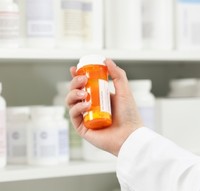Sponsored Content
The Dark Side of Imitation – Counterfeit Alcohol and the Fight for Safety
The Transported Asset Protection Association (TAPA) has published a white paper on the scourge of counterfeit alcohol in response to a string of high-profile incidents that have claimed hundreds of lives.
The document details some of the most notorious incidents in recent years and explains how a brand protection standard (BPS) developed by TAPA Asia Pacific (TAPA APAC) can strengthen the supply chain against counterfeit goods by encouraging logistics companies to "design out" vulnerabilities. Read more
Sponsored Content
The Dark Side of Imitation – Counterfeit Alcohol and the Fight for Safety
The Transported Asset Protection Association (TAPA) has published a white paper on the scourge of counterfeit alcohol in response to a string of high-profile incidents that have claimed hundreds of lives.
The document details some of the most notorious incidents in recent years and explains how a brand protection standard (BPS) developed by TAPA Asia Pacific (TAPA APAC) can strengthen the supply chain against counterfeit goods by encouraging logistics companies to "design out" vulnerabilities. Read more
Press Releases
-
》 Energous introduces battery-free e-Sense tag, establishing first end-to-end wireless power platform for the ambient IoT
-
》 TrusTrace launches 4th industry playbook: A new framework to streamline data collection to comply with industry regulations and de-risk supply chains
-
》 Crane Authentication unveils InsightPulse: A discreet, smartphone-enabled authentication system
-
》 Antares Vision Group partners with Siempharma to enter pharma labeling equipment market with automatic unit for cylindrical containers
Partners




 Steroids and drugs for erectile
dysfunction topped the list of counterfeited medicines seized by
the authorities in Brazil between 2007 and 2010, according to a new
study.
Steroids and drugs for erectile
dysfunction topped the list of counterfeited medicines seized by
the authorities in Brazil between 2007 and 2010, according to a new
study. Traceability initiatives in the EU, USA and
elsewhere will require pack-level coding (serialization) for
prescription pharmaceuticals. SecuringPharma's
just-published executive briefing explains these requirements, how
they will affect your global supply chain, and what action you need
to take. Order your copy
Traceability initiatives in the EU, USA and
elsewhere will require pack-level coding (serialization) for
prescription pharmaceuticals. SecuringPharma's
just-published executive briefing explains these requirements, how
they will affect your global supply chain, and what action you need
to take. Order your copy 